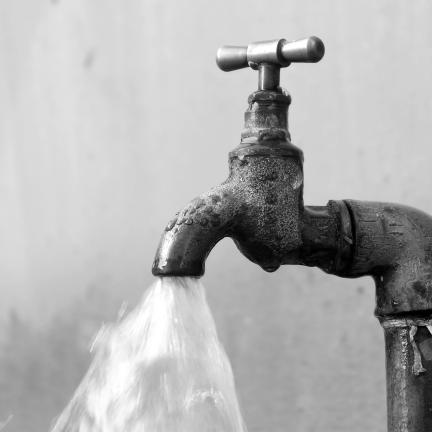Lead and Copper FAQs

In December 2020, U.S. Environmental Protection Agency (EPA) finalized the first major up-date to the Lead and Copper Rule (LCR) in nearly 30 years. EPA’s new rule strengthens every aspect of the LCR to better protect children and communities from the risks of lead exposure and provide increased access to information.
Prince William Water is committed to providing safe drinking water to our customers, being proactive in adhering to the requirements of the Environmental Protection Agency's (EPA) Lead and Copper Rule Improvements (LCRI). All water distribution systems and service lines owned and maintained by Prince William Water are non-lead.
Prince William Water's suppliers, Fairfax Water and the City of Manassas, add corrosion inhibitors that contain phosphate. Corrosion control is essential to prevent the dissolution of lead from lead solder in older homes and to extend the life of household pipes. Prince William Water's state-certified Water Quality Laboratory conducts or oversees state and federal testing to ensure that our water meets or exceeds regulatory standards.
Frequently Asked Questions
How can I have the water in my home tested for lead?
Certified laboratories that analyze for lead are available and can be found on the Virginia Division of Consolidated Services website or by calling 804-225-4949, TTY 711.
If my house has lead or galvanized lines, who is responsible for replacing the service line?
As a property owner, you are responsible for replacing the line from the meter to your house and the premise plumbing. If the customer portion of the service line is determined to be lead, the customer may choose to replace it at their expense but should coordinate the replacement with Prince William Water in advance to ensure compliance with federal and state regulations. The Southeast Rural Community Assistance Project’s (SERCAP) Residential Lead Service Line Program provides up to $2,500 in grant funding toward the costs of replacing lead service lines coming into the home for eligible low-to-moderate income homeowners. Contact SERCAP at (540) 345-1184 or visit online at https://sercap.org for more information. If you need more information about potential financing solutions or if you are planning to replace the portion of the service line that you own, please contact us at leadandcopper@pwwater.org or (703) 335-7950.
How do I locate and inspect my water service line?
Here are a few video tutorials.
Where can I get information about Prince William Water’s water quality?
Our Water Quality Report provides up-to-date information about the quality of your water.
For more information, please contact Prince William Water’s Regulatory Affairs Office at (703) 331-4162 or email water_quality@pwwater.org.
What are next steps for the Lead and Copper Rule Improvements?
All systems must make their lead service line inventories available to the public. In addition, all systems serving greater than 50,000 people must make their lead service line inventory publicly available.
Once VDH approves the line inventory, Prince William Water will identify lead and copper sampling locations in areas that contain lead service lines. Also, 20 percent of the elementary schools and child care facilities in our service area will be sampled each year for the first five years. If the distribution system exceeds the 90th percentile for the EPA’s lead action level of 15 parts per billion, Prince William Water will be required to replace 3% of the lead service lines in the distribution system annually or until the system has two consecutive monitoring periods where all results are below the action level.
What is the U.S. Environmental Protection Agency (EPA) standard for lead in drinking water?
When lead testing is performed as required by Environmental Protection Agency (EPA), 90 percent of the samples must contain less than 10 parts per billion (ppb) of lead. EPA has established an action level for lead in water of 10 ppb, meaning that a water system with more than 10 ppb of lead in 10 percent of its samples may require changes to the water treatment process, replacement of lead service lines and public outreach. Fairfax Water and the City of Manassas, Prince William Water’s water suppliers, have been testing for lead in accordance with the Lead and Copper Rule since 1992 and have consistently tested below the action level established by the rule.
What is the relationship between the EPA action level for drinking water and lead levels in the blood?
The EPA action level of 10 parts per billion of lead in drinking water was established based on reasonable risk assessments. It is the level that requires additional corrective and educational actions but does not necessarily directly correlate to increased blood-lead levels. Blood-lead levels reflect a variety of factors, such as age; exposure to dusts, paint chips or soil containing lead; and the amount of water consumed daily. For women, pregnancy can also affect blood-lead levels. Nationally, the biggest source of increased blood-lead levels in children is the ingestion of lead-based paint chips.
Where can I find more information about lead in drinking water?
Information about lead is also available on the below websites. Additional information is available from the EPA’s Safe Drinking Water Hotline at 1-800-426-4791; TTY 711 Monday through Friday 10 a.m. to 4 p.m. EST.
Why does my tap water have a metallic taste?
Older plumbing might have a metallic aftertaste due to copper and iron corrosion.
Hot water, poor plumbing, or stagnant water conditions (as when a house is closed for lengthy periods of time) can accelerate plumbing corrosion. Metallic tastes can also emerge when new plumbing or fixtures and metallic materials have not settled.
Prince William Water's suppliers, Fairfax Water and City of Manassas, add a corrosion inhibitor to prevent metals from seeping into drinking water. Run cold water for a few minutes to freshen your home plumbing if your water tastes metallic.
What can I do in my home to reduce exposure to lead in drinking water?
- Any time the water has been sitting unused for six hours or longer, flush your cold-water pipes by running the water until it becomes a constant temperature. Saving the water for other purposes, such as plant watering, is a good conservation measure.
- Use only water from the cold-water tap for drinking, cooking and especially for making baby formula. Hot water may contain higher levels of lead.
- Some people choose to install a water filter in their home. If you choose to do so, follow these three important suggestions:
- Choose one designed for the specific filtration desired, such as lead.
- Make sure the filter is approved by the National Sanitation Foundation (www.nsf.org).
- Maintain the filter as directed by the manufacturer.
What is Prince William Water doing to minimize lead exposure from my plumbing system?
East and West Water Systems
- The water distributed in the East and West Systems is purchased from Fairfax Water and the City of Manassas. Both water suppliers add a phosphate-based corrosion inhibitor and adjust the pH of the water to help prevent lead from leaching into your drinking water from household plumbing.
Bull Run Mountain/Evergreen
- Corrosion control for this public well system is limited to using sodium hydroxide for pH adjustment. Once pH is adjusted, the water is no longer excessively corrosive, promoting pipe longevity while reducing the leaching of lead into the distribution system and home plumbing.
What are the health effects of too much lead?
If present, elevated levels of lead can cause serious health problems, especially for pregnant women and young children. For infants and children, exposure to high levels of lead in drinking water can result in delays in physical or mental development. Infants who consume mostly mixed formula can receive a greater percentage because of the large volume of water they consume relative to their body size. For adults, exposure to high levels of lead can result in kidney problems or high blood pressure. Although the main sources of exposure to lead are ingesting paint chips and inhaling dust, the EPA estimates that 10 to 20 percent of human exposure to lead may come from drinking water.
How does lead get into drinking water?
Prince William Water's drinking water sources, including the Potomac River, Occoquan Reservoir, Lake Manassas, and the Bull Run/Evergreen Well System, do not contain any lead.
A source of lead in drinking water can be household plumbing. In 1986, lead was banned from use in pipes and solder for drinking water systems. In older homes, where lead is present in the service lines, plumbing fixtures and solder connections, it may leach into the water after the water sits for long periods of time.
The water Prince William Water purchases from Fairfax Water and the City of Manassas is treated with a corrosion inhibitor, which is added to help prevent lead from leaching from household plumbing into drinking water.
Has Prince William Water tested for lead before the revised rule?
Yes. The original Lead and Copper Rule required testing in Prince William Water’s distribution system as well as established action levels for both lead and copper when the rule was first published in 1991.
All Prince William Water’s distribution systems have remained in compliance with the original Lead and Copper Rule since its inception. Additionally, Prince William Water partnered with Prince William County Schools and analyzed samples, for lead in school drinking water, under Virginia regulations that took effect in 2017.
What are the requirements for the service line inventory?
Prince William Water must conduct an inventory of all service lines on both Prince William Water’s side of the water meter and the property owner’s side of the meter. Prince William Water must submit the results to the Virginia Department of Health (VDH) by October 16, 2024. The test results must classify all service lines in one of the following categories:
- Lead – where the service line is made of lead
- Non-Lead – where evidence indicates the service line is not made of lead
- Galvanized Requiring Replacement – where a galvanized service line is downstream of a current or former lead service line; or
- Lead Status Unknown – where there is no documentation or evidence to classify the material type
How is this rule different from the original Lead and Copper Rule?
The original Lead and Copper Rule set requirements for the frequency of lead and copper testing, volume requirements for water sampling, action and trigger levels for lead and copper, and necessary steps if those levels were met or exceeded.
The revised rule requires an inventory of all pipe materials from public water mains to privately owned structures, changes the volume of water required for a sample, enhances testing at schools and day care facilities, establishes public outreach requirements and defines lead service lines and replacement requirements.
What is the purpose of the Lead and Copper Revised Rule?
The revised rule is intended to minimize the risks of lead exposure in children and communities by better protecting children at schools and childcare facilities, safeguarding the nation’s drinking water and empowering communities through information.
What kind of material is in my water service line?
Water service line pipes can consist of many different materials including lead, galvanized iron, brass, copper or plastic. You can use the information below and/or watch the available video tutorial below to help you determine your water service line material and plumbing material.

